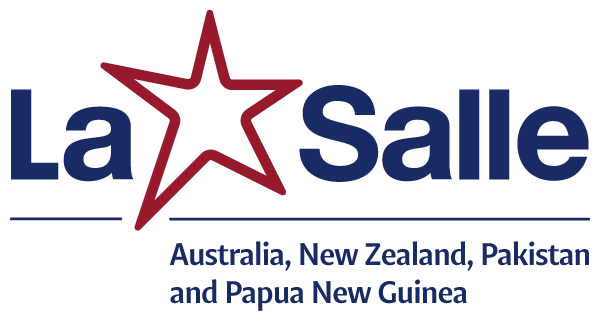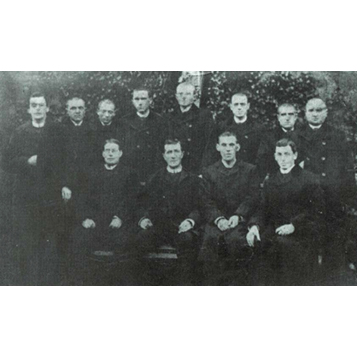The 12 Apostles Start Armidale DLS
In July 1905 the steamship “Néra” berthed in Sydney. After 42 days at sea, three De La Salle Brothers disembarked to breathe in Australian air. The topsy-turvy story of the District’s origins is a fine example of what can go wrong with new ventures. It was to be a struggle and an adventure.
Armidale, cruelly called by a disenchanted Brother ‘the Athens of the North’ was the site for the first school. Br. Anthony Jerome Flood, the Visitor of England-Ireland, came on a scoping mission, leaving Marseilles with two Frenchmen on 31 May 1905, with Br Divitien-Henri, former Director of St Malo and Br Didyme, former Director of Novices. Br. Anthony was impressed with newly-minted Australia-
“Food is very cheap. Good fresh meat at 3d-5d. a lb., fruit in all seasons…The Catholics are good, the people generally very nice. The boys are gentle; in fact, like Irish boys without the bashful spirit” (Carmody, 24).
Arriving in Sydney, they travelled to Armidale on 3 August 1905. There they remained with Bishop O’Connor for three months, while the future Brothers’ house was completed. Br Anthony reported that the site was 20 minutes from the church; the climate was “ideal”, and the school was “admirably situated in a 10-acre field”. A nearby former Protestant college could be a “a very convenient mother house for the District.”
The face problem was cultural and political. The new community of Brother-teachers were to be a mix of Irish and French. This was in the thick of great British and French colonial rivalry.
French & Irish Brothers & Infant “Australia”
Why send two possibly incompatible groups to set up a joint task in the South Seas?
The French Brothers had pride in their educational achievements of 225 years, with 801 Brothers in French communities in 1904. In that year, the liberal, anti-clerical push in France reached an apogee in education, with the prohibition of any religious schools or teachers in the new secular system. Already, the Institute had expanded to 20 other countries in the 19th century, including 210 Brothers teaching 4760 students in Ireland and England.
In 19th century colonial Australia, the Catholic Church had been largely Irish in culture and mainly anti-English, within a proud British empire. As the ‘Romans,’ Catholics were also viewed as ambivalent in loyalty, and somewhat generally independent. Many Irish bishops scoured religious orders back home for teachers to offer a Catholic education to their adherents.
The global nature of the Church assisted bishops who wrote regularly to the De La Salle superiors in France for Brothers over more than two decades, so that finally Cardinal Moran in Sydney received a positive reply for personnel in the fateful year of 1904, when secular laws were enacted in France. In November 1904, after suggesting new schools at Burwood and Surry Hills, Moran offered the first Lasallian venture to Bishop O’Connor, the Bishop of Armidale, the region having been founded as a separate Diocese in 1869. Moran did so ‘considering only the interest of the Church.’
Twelve Happy Apostles? – and an “Ideal Climate”!
The abundance of French Brothers now locked out of their schools led to a cohort of 7 French and 5 Irish Brothers assigned, and travelled on the steamer ‘Runic’ from Liverpool in mid-November 1905. Brothers Defendant-Marie, Camelian, Camille-Eugene, Defendant, Cajetan of Jesus, Claude-Marie and Daniel Paul were joined by Alban Salmon, Macnesius Smythe, Patrick McNamara, Athanasius Grace and Benignus White. They arrived in Sydney on 6 January 1906. “The voyage was evidently very pleasant for all concerned and the relations between the Irish and the French Brothers were friendly, though the latter knew very little English” (Donovan 13). This happy bonding was not to last!
De La Salle College opened on 3 February with 17 students – 9 boarders and 8 day boys. In a pastoral letter of February 8, the Bishop of Armidale was magnanimous in his praise of the new Brothers teaching in his school-
‘These worthy Brothers…second to none in the world. The records of their success in the continents of the old world are very high. By training, acquirements, and character they are competent to do fullest justice to the youth committed to their care…. So, well and widely are their merits known that they already have thousands of schools in Europe, Asia, and America.” He appealed to the laity for support, noting several times the “great deal of expense,” the ultra-modern facilities, attention to “hygiene…comfort…cleanliness,…new furniture of superb quality” including a science laboratory, “perhaps the finest in any district of the state” (Carmody, 28-29)
No Entente Cordiale between French and British /Irish
However, difficulties soon emerged: there were too many! teachers to be paid stipends, by the poor diocese. The Irish Brothers had expected Br. Alban to be the Director (hence Principal), while the French presumed Br. Didyme to be the leader. In addition, Br. Marius Byrne, the assigned Principal, coming from Malaya, did not want to be there.
Monsignor Tobin, the Administrator, largely opposed the French incursion into the tightly-knit Irish Catholic community. The Bishop himself concurred:
“I fear … (the French Brothers) presence here …is to be regretted…that they were ever sent, for they are quite incapable of teaching in English?). All our pupils are sons of Irish parents who do not want their children to be taught by foreigners.”
Bishop O’Connor, while understanding the French cohort’s plight, feared for the “peace and harmony” of the new venture. The local clergy did not want a ‘French College’ which would attract few enrolments from the largely Irish Catholics.
Br. Marius and the French Brothers presented their views on the scenario, and asked to leave Australia, writing to the Superior General on 4 March: it was not a practical matter of lack of English as a language, but a racial question, said Marius, “of nationality, of influence, of direction”.
Br. Divitien wrote in a similar vein: “We have been deceived all along the line, we and the superiors” – meaning that the Australians wanted an Irish province and the Irish Province had been underhand in its designs. “At present we (the French)) are living apart and are together only at the chapel. They (the Irish) demanded that…”
Both cultural groups saw themselves – rightly? – as being deceived by their superiors, who blithely engineered an unforeseen crisis - and one they could not resolve, being 1200 miles away. The cross-purposes of planning and cultural differences were clear to see! The Church showed once more its clear difficulties in ‘enculturating’ a new mission in a foreign’ culture.
The new foundation was be-devilled by the obvious cultural differences, but there was lack of communication and mis-understandings as well, in that the Brothers’ superiors failed to clarify authority structures, and that ‘the tyranny of distance’ from continental Europe, meant letters on steamships took some months to reach their destinations. The Irish Brothers “felt they were blamed for the early fiasco, and felt abandoned by their French superiors, who virtually ignored them for two years” (Donovan, 19).
The result was that Br Marius, never happy in his appointment, and believing the Irish were induced to be there, in an English environment, as in South Africa, de-camped and returned to Malaya, without prior permission (?) from the French “Regime” (the Brothers’ governing body now in Belgium). The seven Frenchmen left Sydney for Colombo on 23 April.
Harmony, Success, More Challenges
The community of now five Irish Brothers under Br. Alban ended a successful year in several ways. The roll call was now 36 boys, of whom 25 were boarders. Brs. Athanasius and Patrick taught at the parochial primary school in town, so the work at the secondary College was arduous for the other three. This expanded ministry and solid College education led to a reputation in the area:
“Happily, we have succeeded in directing these schools in a manner that satisfies the clergy, the parents and the civil authorities, who take a great interest in our establishment.” Students were “most likeable and …willingly amenable to or direction,” reported Br Alban. The ‘break-up’ end-of-year concert had presented the local Member of Parliament, the Mayor of Armidale, and other notables, who supplied gold medals of achievement to students.
References:
Peter Donovan: For Youth and the Poor: the De La Salle Brothers 1906-2000 (2001)
Aloysius Carmody, fsc: The De La Salle Brothers in Australia (1956)
Source: Br Gary Wilson
- Log in to post comments

